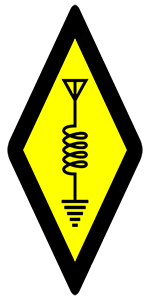
Ham Radio License Exam
Remote Testing
You may choose to take a remote US Amateur Radio License Exam. Since the lock-downs with COVID-19 started the world of Amateur Radio testing has nearly turned on its head. Fully remote examinations are a well defined thing — and still following all of the same rules and regulations as in-person testing have followed for years. Get all the information here and to find an exam session, go to here.
Local Exams
Occasionally ham exams are put on in La Paz by the local group of ham radio operators. Visit our Resources for Ham Radio License Exams page for links to study guides, books and apps.
Before you come to the testing location for the exam, please make sure that you have previously registered for an FCC Registration Number (FRN) and bring a copy of the number to the exam (you will need it for the registration forms). If you already have a radio license, either amateur or ships radio license, in your name, you can find the number on your license. You can search the FCC database here.
If you don't have an FRN, you can use the same page to obtain one. You will need your social security number or a federal tax ID number. You don't have to be a US citizen, but you do need a US mailing address.
Please bring a copy of your FCC FRN, a copy of your existing license if you are upgrading, and US $14.00 or the peso equivalent.
For more information contact Charles Moorhead, charles_moorhead@hotmail.com
or call "Amiga" on VHF Ch 22.
Mexican Reciprocal Ham License
This report from Charles Moorhood on s/v Shadowfax:
I have an Amateur Extra ham radio license in the USA. I applied for my Mexican reciprocal ham radio license. This is a run-down of the particulars:
The process was not difficult at the main SCT office on Heroes del 47 (Breeze-Mart corner on the Malecon down on the Marina Palmira end) up several blocks between Prieto and Ramirez. The SCT office is large and prominent and occupies the whole block. The security guard at the door will direct you down the right hallway mid-way to an office with an English speaking woman named Beatriz in it who will help you fill out the application.
Then there is the traditional trek to the Santander bank to pay $1314 pesos (under $100 USD). Beatriz either does not have a copy machine or it was not working, so she asks you to bring her copies of several things. They have you sign a form saying the provisional license will expire with your visa. In my case this will be mid-2015 for this one and I don’t know what happens if you have the Permanente status.
The application goes to D.F. (Mexico City) for processing but you can use the receipt for application as proof of license while they process it. She will mail the reciprocal license to your local address when it arrives. She says my proper call is XF1/AE7PC. I applied in January and my license arrived four months later. The only other curiosity noted is that the office told me (when I applied) that my call sign prefix would be XF1. The license says XE2. The license does indeed expire the same day as my visa, which is in April of next year. I am a license class II operator, which entitles me to transmit with 500 watts’ power, which is about 10 times what I generally use.
If you are on a six month tourist visa, this would be an expensive process, but with several year visas such as the Residente Temporal or Permanente it becomes less onerous. Ham radio is my one remaining area of “boy scout” sensibilities, but as I do operate ham some I’m glad to have it.
Note that, as in many official Mexican endeavors, the receipt that you paid the fee when you applied will usually suffice in the absence of the intended purchased document, so I have really been “legal” for those four months. But it was nice to get the official document, which is decorated with many colorful stamps from its journey through the Byzantine Mexican bureaucracy.
“73”
Charles Moorhead - AE7PC
1977 Formosa 46 "Shadowfax"